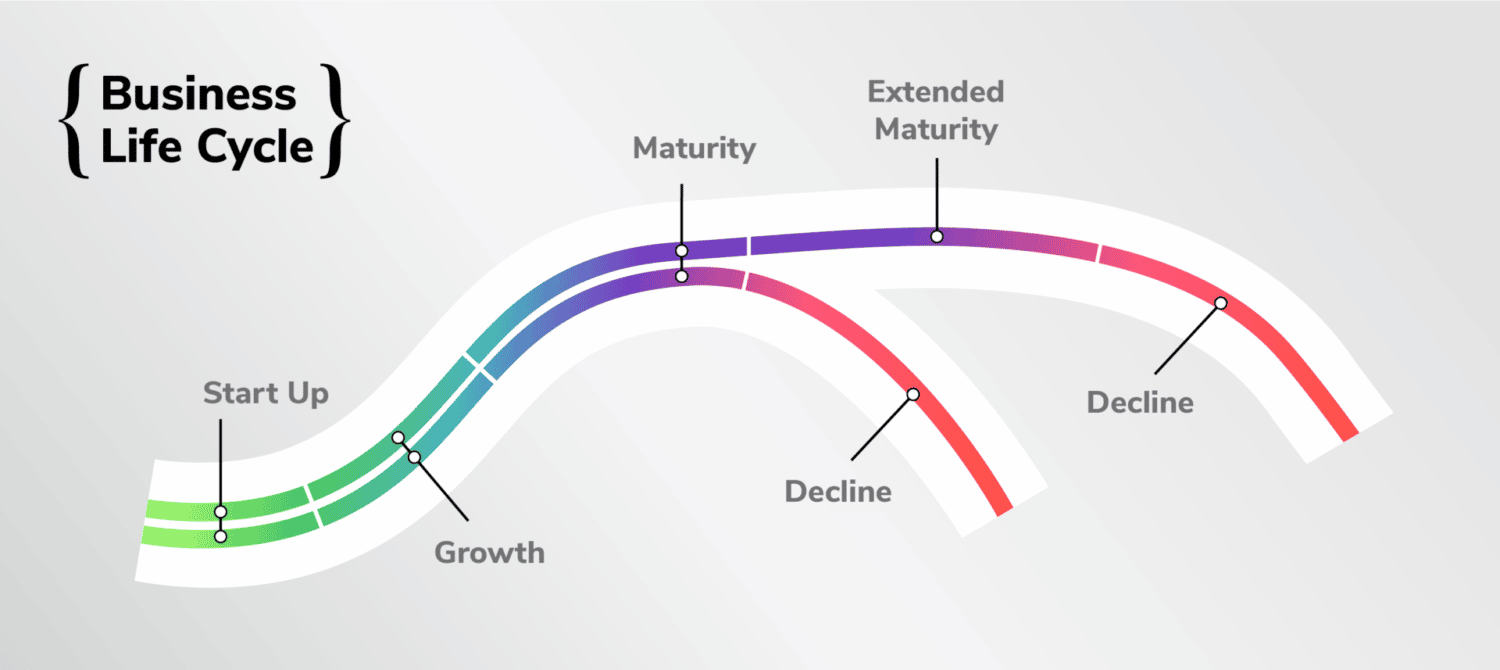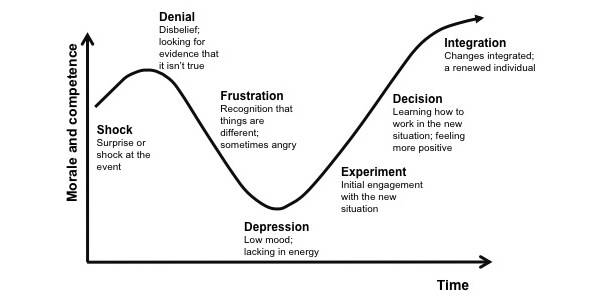Approaching what is happening right now in a productive way is a shift in mindset that you need to have, from viewing what’s happening to your business as a disease and shifting it to the view of disruption.
Understanding the business curve: Viewing COVID-19’s effect on your business as disruption not disease.
Growing up in a small town with hard-working parents, I first discovered the heart-breaking effect of disruption to business in 2008 when the Global Financial Crisis hit. It was as if my parents’ businesses were pins and the GFC was a bowling ball running straight for a strike – and wow did it hit! It bowled over their business and caused the sale of our family home and a complete change of life for our family – at age 17 I’ll forever mark this time as my first conscious exposure to “disruption”.
So, what is disruption? A simple definition in a Google search will tell you:
Disruption | noun
1. Disturbance or problems which interrupt an event, activity, or process. (Oxford dictionary)
2. The action of completely changing the traditional way that an industry or market operates. (Cambridge)
Does that sound familiar? Yep. To me, it sounds exactly like the effect of COVID-19 on businesses.
I don’t want to oversimplify what is occurring right now, because my heart truly bleeds for what business owners and their families are going through (I’ve been through disruption and for place of a better word far out it hurts). However, what I do want to bring to you is some clear processes and logic to approach and take control of this problem known as disruption.
Before we get started; there’s one key take away you need to remember.
Approaching what is happening right now in a productive way is a shift in mindset that you need to have, from viewing what’s happening to your business as a disease and shifting it to the view of disruption.
I just want you to see what I mean by this.
You’ve got two viewpoints right now:
- View COVID-19 as the disease it is
- View COVID-19 as the disruptor it is
Now I’m not saying to forget that it is a disease, because please practice good hygiene and follow the government’s recommendations! But as a business owner just take a look at how your mindset could change your outcome by viewing COVID-19 as a business disruptor:
The view of disruption

The view of disease

I prefer the outcome of growth – so I’m viewing this as disruption.
Whilst I don’t have the cure for the COVID19 disease; I do have the business process for disruption.
And that all starts with first understanding The Business Lifecycle.
The Business Lifecycle.
I remember the first time I discovered The Business Life Cycle. I was in my early 20’s and had just started my university degree doing my Bachelors in Business with a major in Marketing. It was honestly to this day one of those pivotal moments in my life where the penny dropped at the same time as my jaw – it was as if someone knew what had happened to my parents business in 2008 and put it on a map with logical explanations and processes. I felt this weight off my shoulders, and my brain clicking into gear and a voice in my head thinking – if only my parents knew about this.

Businesses pass through three primary stages before reaching extended maturity or decline. The rate at which businesses pass through each stage varies depending on a broad range of influences and factors. Some don’t even get to extended maturity, some barely even make it to growth. The ones that do, the ones that don’t give up in the face of disruption are the ones that evolve through innovation and make their way up the curve to extended maturity.
Where does your business sit on this curve?
Start-Ups
Now more than ever get your mission and purpose defined. If you’re going to move forward and head into growth, you’ll need to have a purpose for your growth.
Growth
If you’re in growth, then it’s important to understand that once you’ve achieved growth and your curve begins to stabilise you’ll begin to establish maturity.
Maturity
Don’t be fooled into thinking you’re safe – you’re established and there’s a difference. In order to extend your maturity, you need to be proactive so that you can prolong this stage for as long as possible. Why? Around the corner there’s decline unless you extend your maturity. So now’s the best time to begin the innovation process so that you can advance into extended maturity rather than enter decline.
Decline
For those sitting in decline, try not to take it personally. It is at the end of the day, the process of business. However, you should remember that it’s not over yet. You can always innovate so that you evolve and avoid exit.
No matter what phase you’re in, it’s important to remember that you’re in this process. It’s the cycle of life for a business; and with all cycles of life you’re going to need to innovate or exit.
There’s no right or wrong answer in innovating or exiting – it’s completely up to you and your individual business/ personal situation.
All that I can wish for you to do is to make an informed decision to be proactive, and not reactive, in your decision making.
Renewing the curve – Evolving to innovate, and innovating to evolve.
Based on what you know, if you’re seeking evolution not exit and evolution is an option you wish to pursue, then you’re going to need to make friends with innovation.
Through innovation, you can pivot your business against the curve, through innovating a new product, service, or even a new business model in order to take over the decline of the existing one.
What is innovation?
Innovation at its core is a new way of providing improved value by meeting new or existing needs through the creation of things such as solutions, products, services, processes, ideas or technologies.
The innovative mindset:
An innovative mindset means being open to change, and embracing the fact that our world is in a continuous state of growth and transformation, which by you approach the changing landscape with curiosity, creativity, and courage.
An innovative mindset means being open to change, and embracing the fact that our world is in a continuous state of growth and transformation.
Having an innovative mindset means being aware of where the future may lead and involves approaching our changing landscape with curiosity, creativity, and courage.
The innovative mindset process:
1. Be open to change.
It’s natural to resist disruption when we’re familiar with the territory, however being open to change is the first step in developing an innovative mindset. We can use the Kubler-Ross Curve to help understand typical human reactions to change; which can involve denial, frustration, and even depression. By the time we reach the acceptance stage of this curve, we’ve already acknowledged that change is unavoidable, and we’re ready to adapt our decision-making accordingly. The trick to having an innovative mindset is being able to move through this curve with timeliness and efficiency, especially when your market is experiencing rapid disruption.

2. Embrace creativity and courage.
Thinking creatively is the second step in adopting an innovative mindset. Of course, creativity is more than just lateral thinking. To be successfully applied in a business setting, your creative solutions should also involve research, analysis, structure, and processes. You’ll also need courage in order to find newer, smarter ways to connect with your market throughout periods of disruption. Courage gives us the strength to move away from ‘business as usual,’ and the conviction to challenge the norm.
3. Think and act decisively.
Disruption means that fast-moving markets become even faster. For this reason, the ability to think and act decisively can be the difference in out-pacing and out-innovating your competitors. Decisiveness can empower business owners to make clearer decisions around redeploying staff, prioritising new projects, or allocating resources towards innovation. The notion of ‘failing fast’ is also important in this environment, especially as you test new concepts to quickly discern what works. Remember, disruption breeds innovation – so shift your mindset, and think outside the box!
Where to next?
If you’re going to take on the disruption that’s causing decline or threatening your business no matter the stage in the cycle it is. Then I encourage you to take on the innovative mindset and see where that leads.
Innovation isn’t invention – innovation leads to invention.
Imagine all the inventions that could happen if we all viewed this disease as the disruption it is and started innovatively trying to bring forward new growth.









